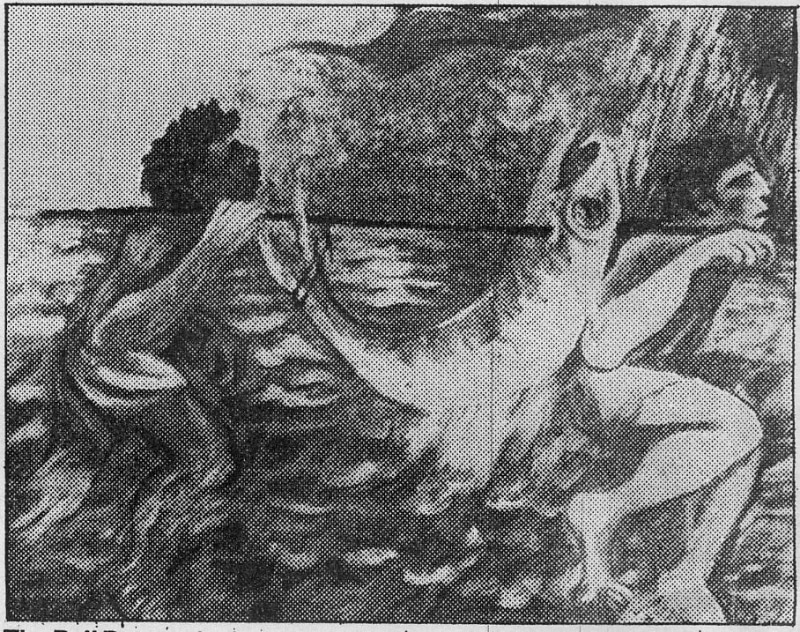
Rummana Hussain’s first show in Bombay undoubtedly makes a stunning impact. After studying art and design in Britain between 1972 and 1974, she has held shows of her paintings in Calcutta and Delhi and has also been seen in a number of group exhibitions.
Hussain’s paintings are strong in their figurative impulse and rich in symbol and metaphor. Around man, she sees the play of destructive social forces-violence, corruption, ritualism and exploitation, which cause the collapse of the social system. She focuses on these themes. It is worth considering her canvases one by one. The Immersion is a playful re-enactment of the immersion of Ganesh. The idol weighs down the figure of the man who is carrying it. Its proportions are typical of the slightly bizarre touch which Hussain gives to her supernatural creatures. In The Dark Times, Hope is lying dead on a rock, but there is an angel in the sea. Here, there is a detailed treatment of architecture in the painting.
One of her most notable works is Parable of the Blind with a Pied Piper-like flutist leading blind people and blind rats. The rats are falling into the water which occupies half the canvas and the goddess Kali rides a tiger in one corner. There are people crying up to heaven from the edge of a cliff with bats flying around. The painting is typical of Hussain’s deceptively raw manner.
She uses warm, sometimes positively loud colours, but these are balanced by her intricateand original imagery and one feels she has a right to use this colour style.
Reclining figures and batlike creatures people her canvases. She admits to the influence of Brecht’s poetry and the Flemish painter Breughel’s works, but Chagall also seems to have influenced her. That her palette is entirely different from Breugel or Chagall gives her much credit.
In many of her works fish assume monstrous proportions and strengthen the link with fantasy. One such work is Big Fish Eat Little Fish. This is painted in vivid greens and blues. There is a curved figure of a fisherman complemented by a reciprocally curved figure of a fish, completing a circle. The circle is cut diagonally by the line of the sea. Here, Hussain gives us an aerial view of fishing boats-a touch of inspiration that enlarges conventional perspective.
One of her most expressive works is The Angel and Colaba (Colaba is where Hussain lives)-a dramatic juxtaposition of myth and reality. The figure of an angel carrying within it the figure of a woman occupies a large part of the top of the canvas.
Some of Hussain’s works are literal-like, Fragmentation and Collapse-but on the whole her work conjures up shades of surrealism while remaining sturdily expressionistic.
Rummana Hussain will alwyas be considered a thinking painter. If she had adopted a more sophisticated technique, she would have perhaps lost the great force and honesty that characterise her paintings.
Rummana Hussain
Paintings
Jehangir art gallery
Till April 10
-Dnyaneshwar Nadkarni